Drain Hygiene
Tools for Possibilities: issue no. 40
Once a week we’ll send out a page from Cool Tools: A Catalog of Possibilities. The tools might be outdated or obsolete, but the possibilities they inspire are new. Sign up here to get Tools for Possibilities a week early in your inbox.
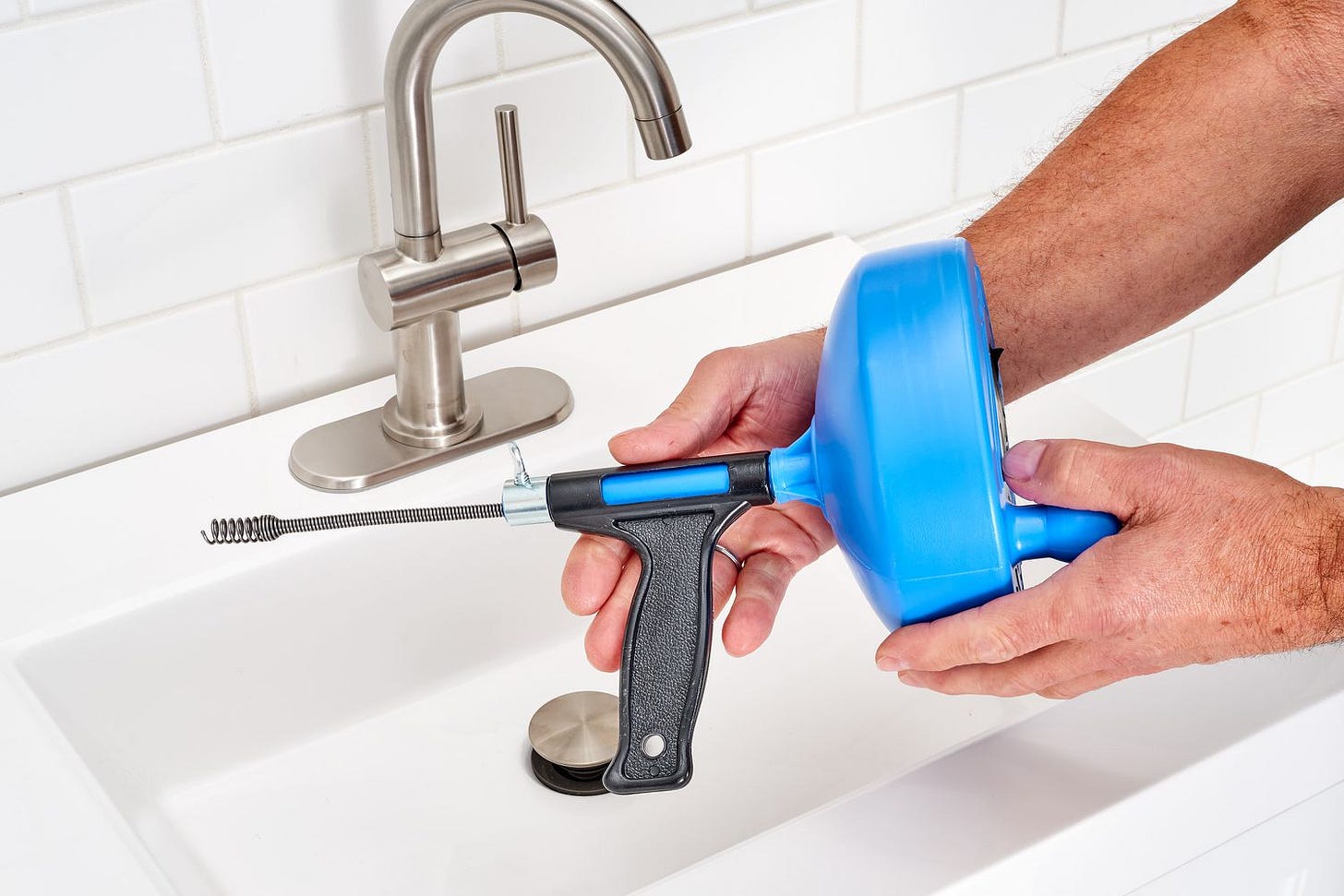
Far reaching drain cleaner
Recently our kitchen sink became completely blocked. Neither the previously reviewed Zip-it Drain Cleaner (too short) nor the Drain King (explained later) would have been able to fix the blockage, and we ended up buying an affordable 25-foot cable auger after two doses of chemicals failed to clear the blockage.
Our kitchen sink connects to a pipe in a wall at a right angle bend, and another pipe under the house after which it runs about 15 feet before connecting to a second drain. In order to insert the auger I disconnected the U-bend under the sink (use a bucket to catch the contents) and ran the auger slowly down the pipe into the wall.
When it hit the first 90 degree bend, I tightened the thumbscrew on the canister, and with a little pressure and turning the handle the cable turned the bend (practice makes this easier). When I hit the first real blockage I repeated the procedure and after a few turns and a little more cable I pulled the auger back up. Recognizing a blockage compared to a bend is fairly easy; with a bend a few turns should send the auger end past the bend and it will “jump” around the bend. With a blockage it will remain harder to push more auger down.
In my situation we had multiple partial blockages all the way down to the joint with the second drain, so in all it took about six hours of auguring to clear the drain (the good news is that the drain is now clear the whole length). With practice I can now run about 23 feet of cable down the drain in about five minutes. Any pressure tool would be likely to just push the partial blockages together creating one super blockage. I’ve also seen warnings about using those with older pipes (Our house was built in the 1930’s) as they can blow out some joints under the wrong circumstances.
While much more expensive versions are available (30′ electric augers start at around $140, 100′ ones seem to be more like $2,500) I prefer the simple manual canister auger. You can also get versions that attach to your electric drill, but I find that screwing the end into the blockage and pulling a chunk of it back up (most of it is hair based) seems to work very well. In our house no plug hole is more than about 23 feet from another access point to the drains so this length is both cheap and sufficient for my needs.
It is important to wear gloves as your hands will get dirty when you pull the auger back up. Also, too much pressure on the cable (including too many turns) and you risk kinking it. A kinked cable should be replaced as it is almost impossible to use. All in all, the investment in a cable auger saved an expensive call to the plumber. — Adam Morris
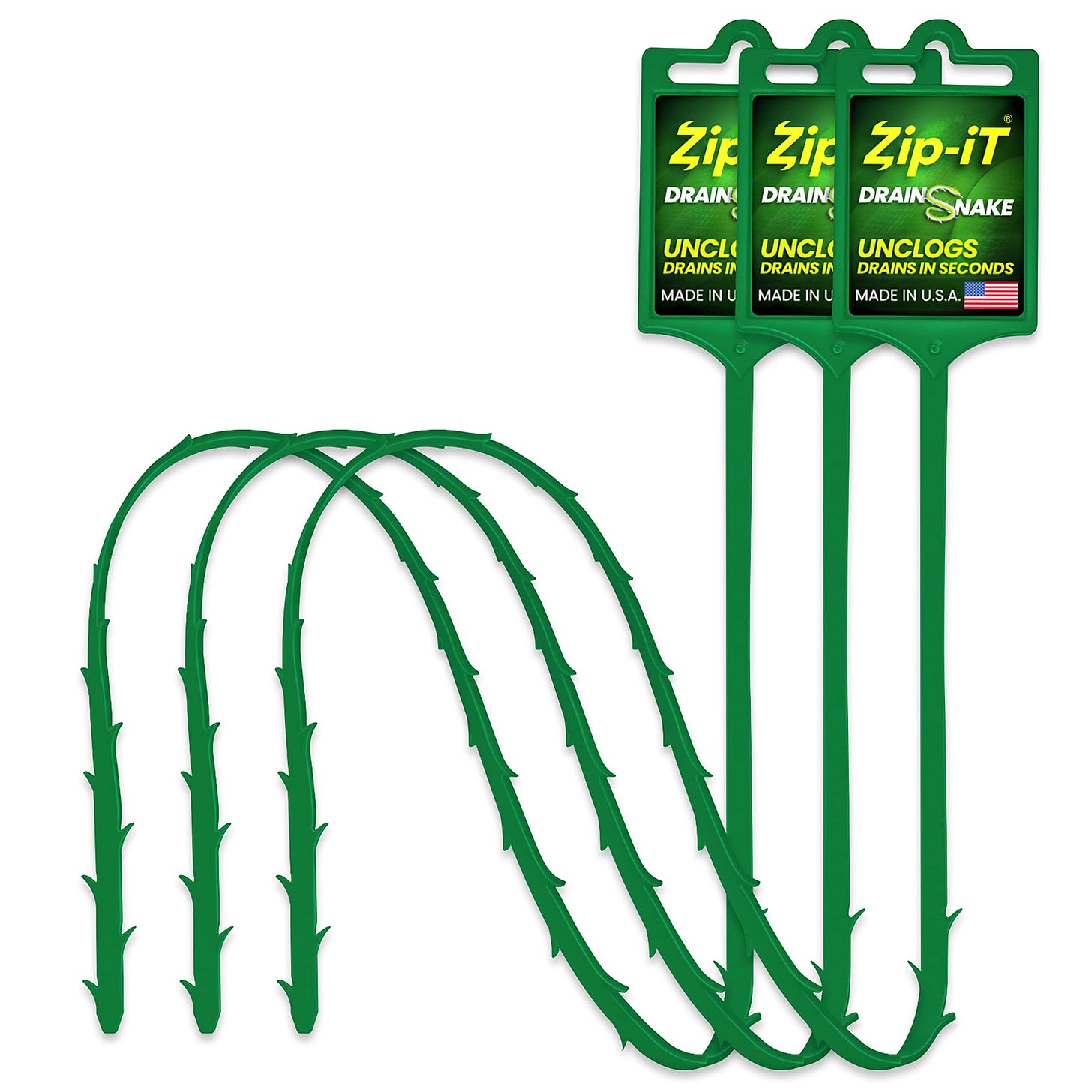
Hooks out gunk
This flexible 24″ plastic probe will remove an alarming amount of hair and gunk clogging your sink or shower drain. It descends easy. You can snake it down without taking off the usual drain plug. The many little reverse (and very sharp!) spines hook hairballs and other unmentionable crap as you carefully back it out. It removes grunge that liquidators won’t budge. Sold as disposable, a cautious wipe will keep it going forever. We have a very hairy household; I can’t keep the plumbing going without it. — KK
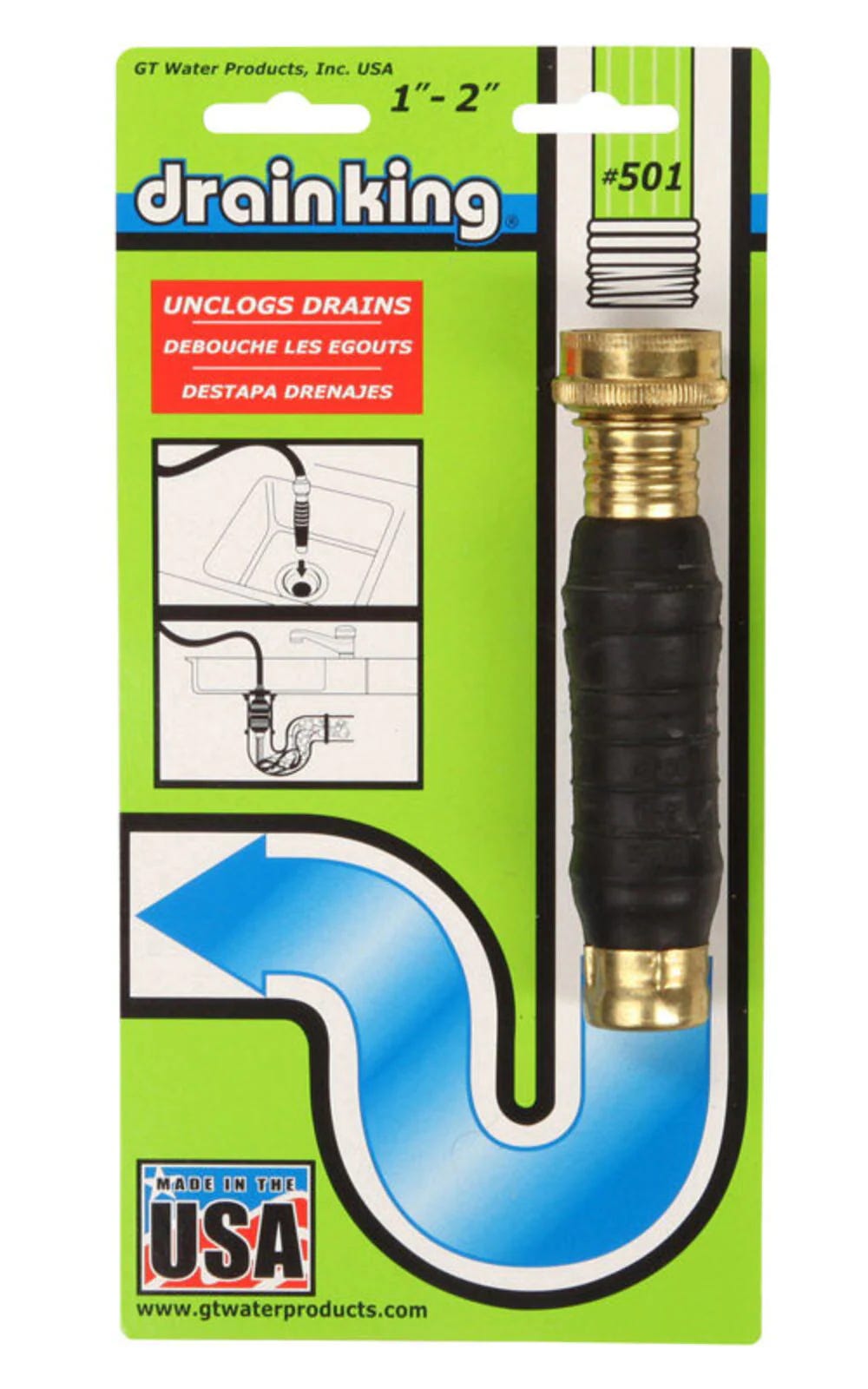
Unplugs pipes without chemicals
Brilliant invention for clearing clogged drains without caustic chemicals. The Drain King comes in different sizes for different drain diameters. You attach it to a hose, and say for the kitchen sink, take off the p-trap, and slide the hose down the drain pipe as far as it will go. You then turn on the hose and it builds up pressure inside the wedged bellows to the point where it releases in a burst, expanding and contracting, ka-chunk, ka-chunk . . . You can clear one obstruction and then push the hose further to get to others. It really unclogs crap. Marveloso! — Llyod Kahn
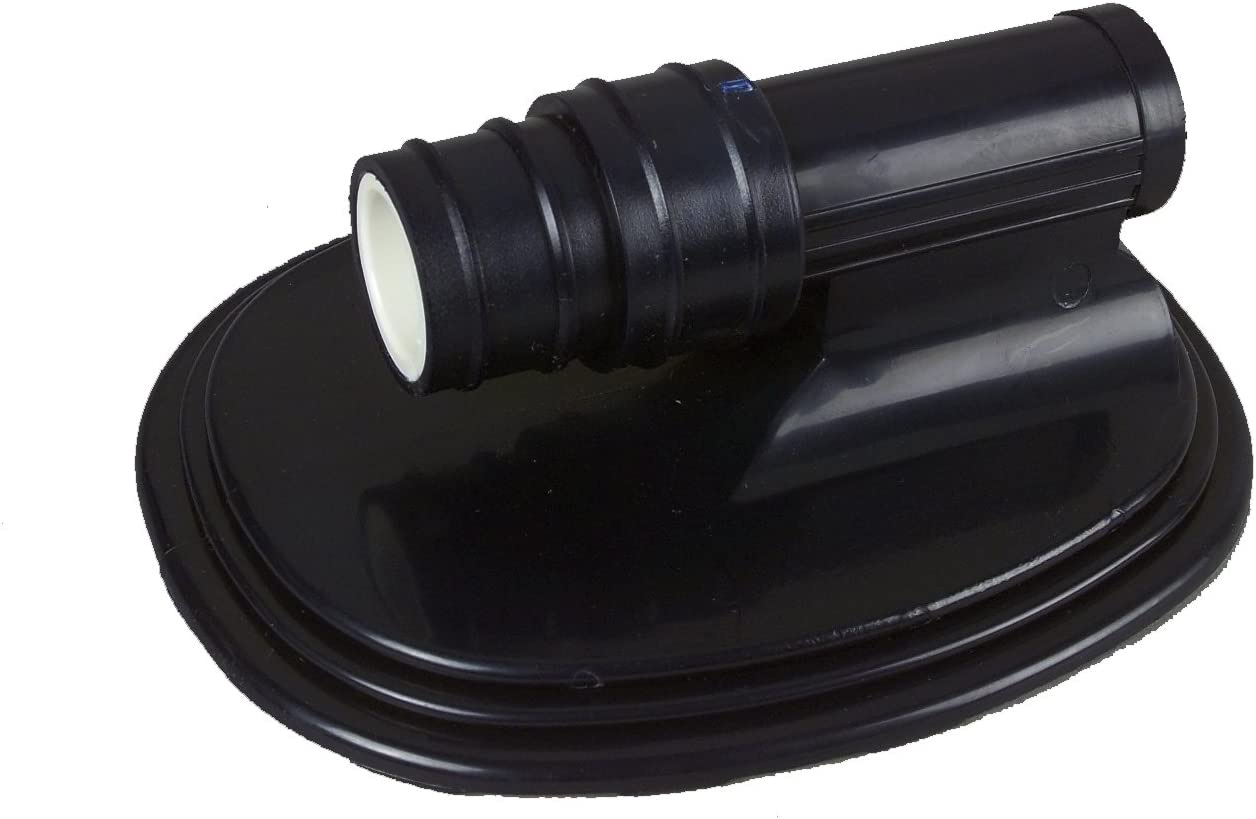
Simple emergency sump pump
This is a cool tool. It is a powerful water pump you can use without electrical power; instead it uses the Bernoulli effect from the water pressure in a hose. This pump saved us a few weeks ago. It rained all day and then at about 5:15 the power went out. Our sump pump in the basement had been going every two or three minutes but there were still two or three inches of water covering the cellar floor when I got home from work. I was desperate to keep the level from getting up to the furnace. Our neighbor Jan had a generator to run their sump pump, so she could offer me her PUMPS-A-LOT which they’d used to use before they got the generator.
You connect the pump to a faucet with a garden hose. Inside the unit, there’s a nozzle pointed at the output hose. It sucks water from below, spitting out that water together with the propelling water via the output hose. In truth, I didn’t believe it would work. The makers claim you can pump 800 gallons per hour or 6 gallons for every one gallon of water you use. But if it didn’t work, I’d be filling my cellar with more water. So I tested it in a bucket of water first. It worked! Like magic. It emptied the cellar in a few minutes! Since it has no moving parts, takes up little space, it is an ideal emergency tool. — Michael Shook
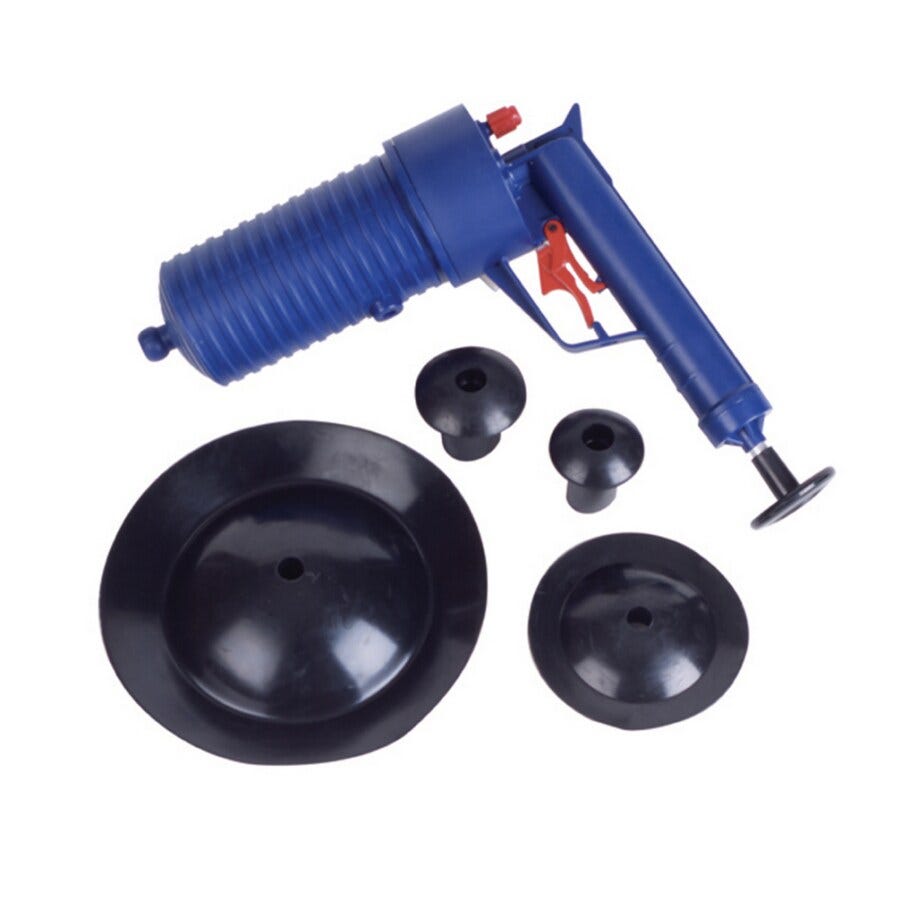
Exhilarating, manual drain blasting
This cheap, no-name, pump-action drain unblocker is a great alternative to professional models that can cost more than $50. This pump is also really fun to use. Rather than poking a hole in blockages, it really dislodges them: I put one end of the unblocker on the edge of a chair, pump down up to 35 times, place one of the item’s four gaskets over the business end, position that end in the drain, put most of my weight behind the handle and pull the trigger — Ka-POW! Very satisfying.
It takes less than five minutes, not counting the prep: open a tap until a couple of inches of water are in the basin and pound rubber stoppers into the two circular overflow-drain outlets. Important: in bathroom sinks and tubs, the overflow drains have to be plugged first to ensure the blast doesn’t spray backed-up water all over the bathroom. An extra pair of hands and/or lots of Gorilla Tape over the wadding are needed for non-circular overflow drains.
Unlike an auger, which I’ve had trouble getting to follow a 90-degree pipe-turn, there’s no yucky clean-up of the tool afterwards or any need to get your hands into the backed-up water. The Zip-It drain cleaner is no doubt a cool tool in some situations, such as a clogged trap beneath a low-height sink, or perhaps a clogged bathtub or toilet trap. But it doesn’t do as thorough a job in cleaning the trap, and it wouldn’t clear a pipe that’s up behind the wall. It’s too short (less than 18 inches below the handle) to reach to the bottom of my unusually tall bathroom sink’s trap. It’s also too wide — it barely fits through the four slots in the drain-guard of my kitchen sink. When I withdraw it, every barb catches on the slots’ edges, which means that much of the gunk it snags falls back down the drain. I’m glad to have the Zip-It, and it does cost very little, but it’s only a partial solution. When you have a stopped-up drain that seemingly only a pro could unclog, you need a Pressure Pump (or Air Pressure Drain Opener, more info below) – and again, its cost is modest in comparison to a pro model.
I have also tested the Drain King, a pulsing expanding-rubber-gasket drain unblocker. Its main defect is that the guard-fence beneath the drain inlet must be removed to thread it through, which is usually impossible, or a plug in the basement must be unscrewed, which dumps a pail full of nasty water into the pail you’ve thoughtfully placed beneath it (or not). You can get around this if the trap, etc. beneath the sink is removed — but that’s still a messy hassle — and it doesn’t always work. Further, if you have a larger pipe, an additional, wider-diameter Drain King must be bought to cope with it. Another drawback to the Drain King is that few apartment dwellers will have the garden hose and faucet fittings that are necessary to drive it. And even for those persons who live in a house, it’s a pain running a hose in through a propped-open door–and it can be a bit messy.
That’s why the blaster is so cool — even though it’s not a do-all product, it fills a crucial niche where other products work poorly or with difficulty.
The Kleer Drain is a better-publicized, award-winning home-style drain blaster sold at Home Depot, but it costs $30 (more than twice the Pressure Pump and a few bucks more than the Air Pressure Drain Opener). The Kleer Drain also requires carbon dioxide cartridges to power it, which might be impossible to obtain in a dire emergency situation (i.e. social collapse) and obviously it costs money to buy refills. The Kleer Drain does come with a “splash guard” — a piece of plastic wrap with a hole in it – but with the Pressure Pump or Air Pressure Drain Opener one could easily make one, or just wrap a towel around the barrel. More important in reducing blowback is to put a lot of straight-down weight on the barrel before pulling the trigger.
There is no lettering on the Pressure Pump itself. There is an 8.5 x 11 sheet folded into a booklet format with humorously inept-English instructions. It says the manufacturer is “Yidatong Pumps.” The title or brand name is “Dongsheng Drain Unblocker.” No address or other info is provided. The only lettering on the plain white box is “Country of origin: China.”
I recently learned that the stock is limited for the Pressure Pump, but I found a similar manual pump being sold as the Air Pressure Drain Opener that also comes with four gaskets. — Roger Knights
06/26/23





